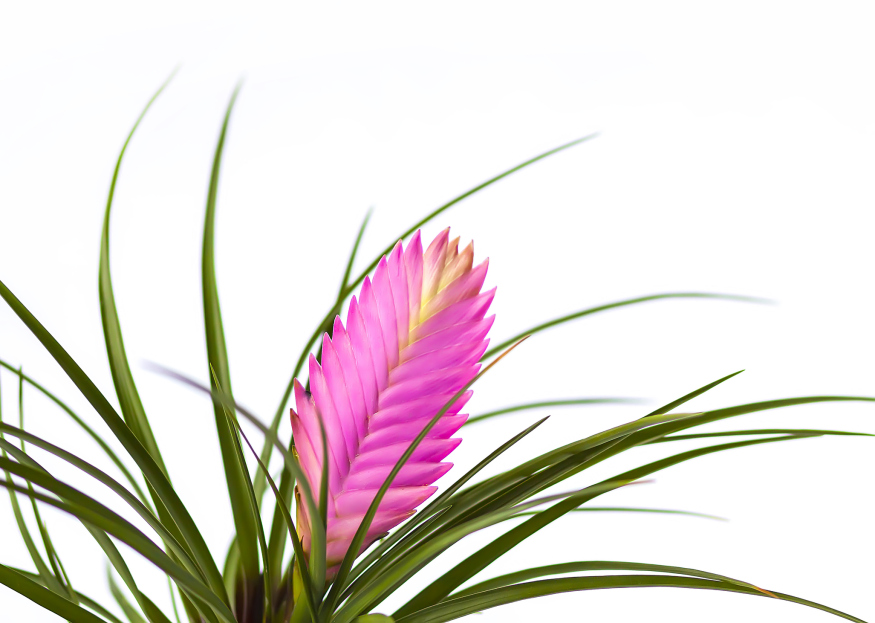
The pink quill that brings color and charm to any space
Looking for a houseplant that’s both low-maintenance and wildly eye-catching? Meet the Tillandsia cyanea, also called the Pink Quill Plant. This striking bromeliad gets its name from the vivid, feather-like pink bract that resembles a quill pen—and it’s topped off by delicate purple flowers that bloom from its base.
Native to the rainforests of Ecuador, Tillandsia cyanea is an epiphytic plant, meaning it often grows on trees in the wild, absorbing moisture and nutrients from the air. While many air plants are grown without soil, the Pink Quill is happy living potted in a light substrate, making it a unique crossover between air plant and houseplant.
Tillandsia cyanea thrives in bright, indirect light. Place it near an east- or west-facing window with filtered sunlight. Direct afternoon sun can scorch its pink bract and delicate leaves, so it’s best to provide dappled or soft lighting.
Avoid low-light areas, as the plant’s vibrant colors will fade and flowering may not occur.
This bromeliad has two watering needs—its roots and its central "cup" or bract.
If your home is very dry or you’re growing it mounted (rather than potted), soak the entire plant in room-temperature water for 15–30 minutes every 7–10 days, then shake it gently and let it dry upside down.
Tillandsia cyanea loves higher humidity, ideally around 50–70%. If your space is dry:
Ideal temperature: 60–85°F (16–29°C)
Avoid cold drafts and temperatures below 50°F (10°C).
If grown in a pot, use a light, well-draining mix, such as orchid bark or a bromeliad mix. A blend of orchid bark, perlite, and a small amount of peat moss works well.
Choose a small container with good drainage—Tillandsia cyanea doesn't need a lot of root space.
Feed with a diluted bromeliad or air plant fertilizer once a month during the growing season (spring and summer). You can mist the fertilizer onto the leaves and bract or water the soil with it.
Avoid over-fertilizing—it can harm the delicate foliage or disrupt blooming.
The pink quill is a bract, not a flower—and it can last for several months! The actual purple flowers emerge briefly from this bract and are short-lived, often blooming just once.
After flowering, the main plant will slowly decline, but don’t worry—it produces pups (baby plants) at the base. Once these pups are a few inches tall, you can separate them and pot them up individually.
Tillandsia cyanea is non-toxic to pets, making it a great option for households with curious cats or dogs.